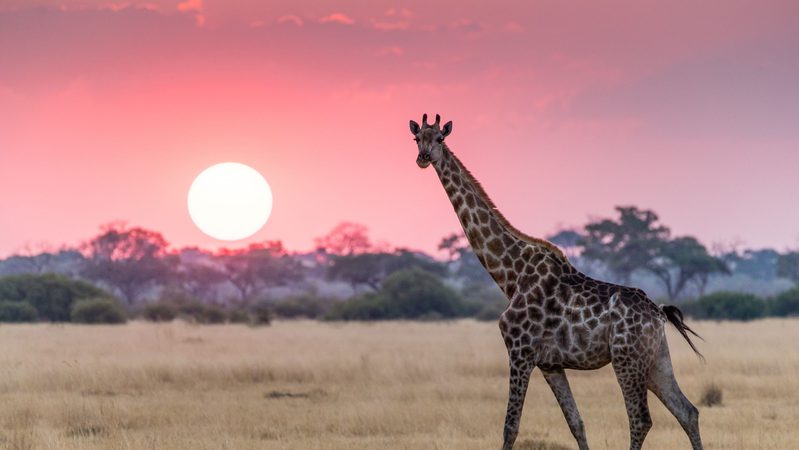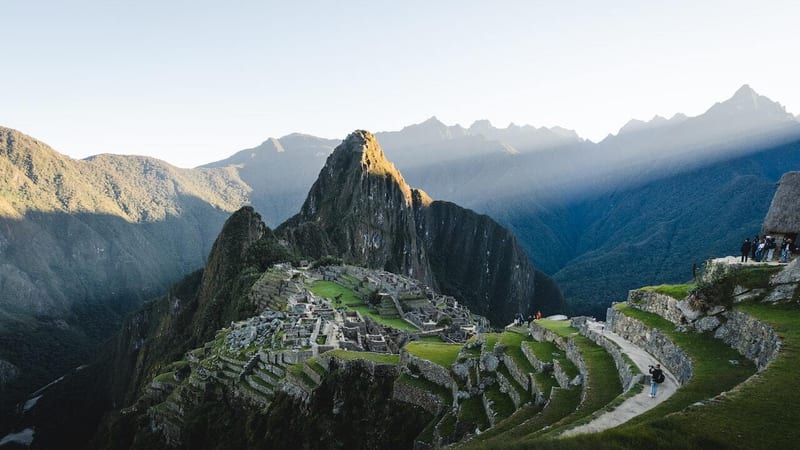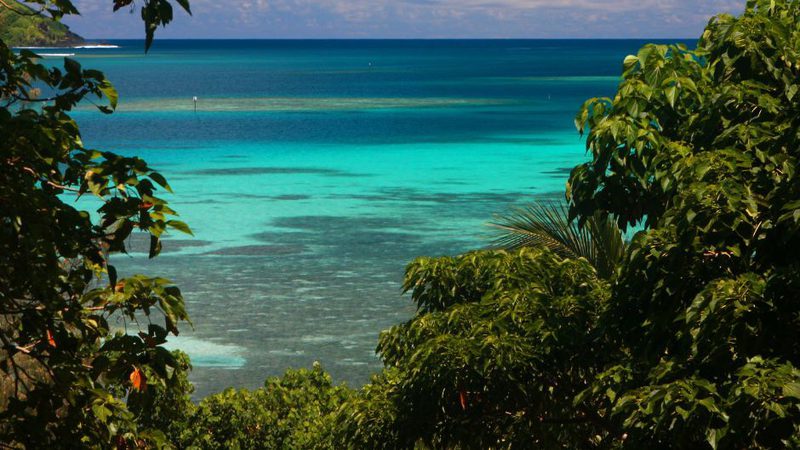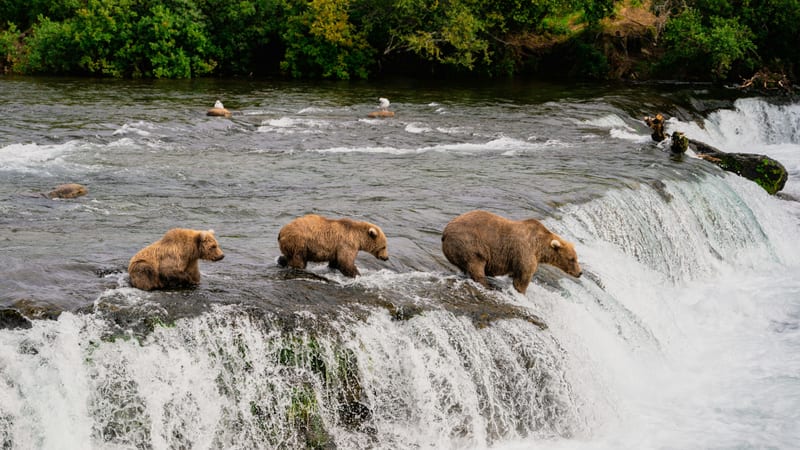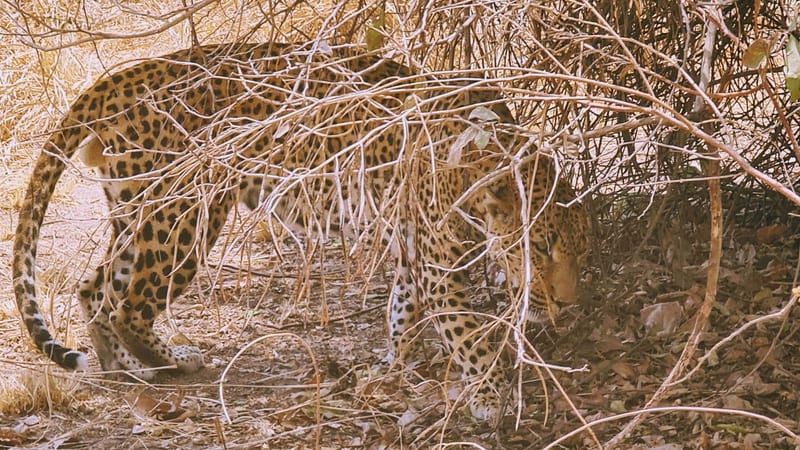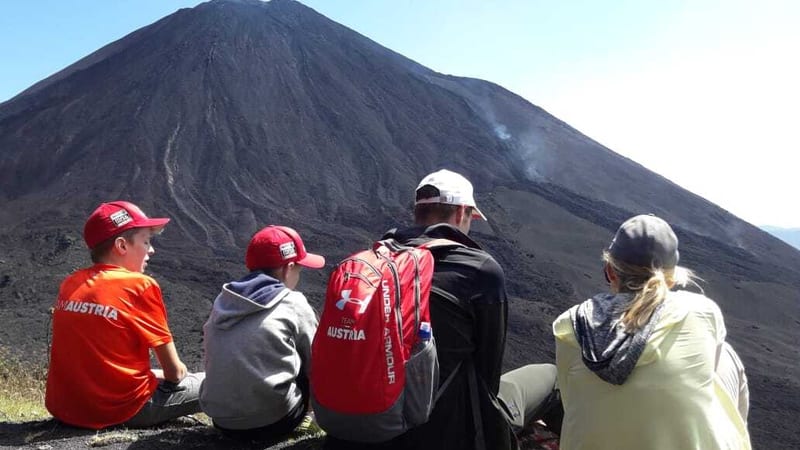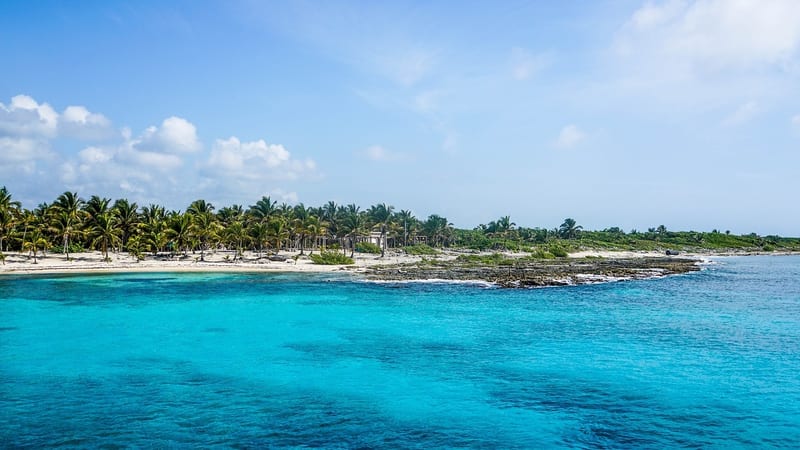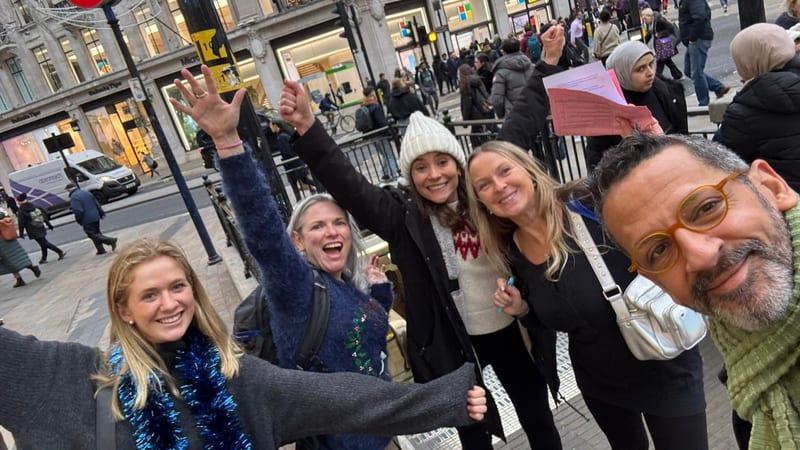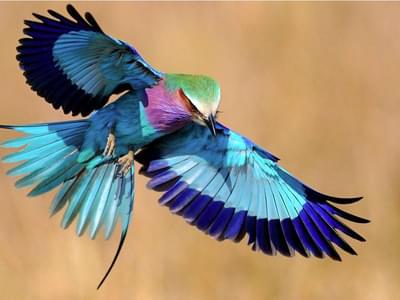
Kenya is an absolute haven for bird enthusiasts with its rich tapestry of habitats being home to well over 1,100 species with plenty of endemic and near-endemic species being found throughout the country. Kenya holds a ‘bird watching’ world record with 342 species spotted in 24 hours!
Although birding in Kenya is stunning all year round, between the months of September and April the birding becomes truly remarkable – it might not be the best time for wildlife viewing but this is when the migrant visitors from North Africa and Europe are present and its at this time of year the resident species are nesting and also in full, resplendent breeding plumage.
Kenya is one of the most visited safari destinations in Africa and for good reason, the array of wildlife you can see is, without doubt, a premium and the country is quickly becoming well-geared to welcoming birding enthusiasts. On a typical ‘big five’ safari in Kenya, you’re likely to see anywhere between 200 to 300 species of bird depending on the regions your safari takes you. But with a specialist birding safari and guide, you stand a very good chance of seeing at least half the species that call Kenya home.
Choosing which hotspots you want to visit will be dependent on the species you’re itching to tick off most. From the magnificent Rift Valley, the shores of Lake Victoria, the open plains of the Masai Mara and the forest-cloaked Mount Kenya, there’s certainly ample of choice for even the most discerning birder. Here are just a few of the birding highlight areas (in alphabetical order):

Amboseli
As popular with birders as it is with safari goers wanting to see elephants, Amboseli is home to over 400 species of bird including at least 45 different raptor species including Martial and Crowned eagles as well Amur falcons. Lesser flamingos, a myriad of herons, darters, kingfishers and ducks all nest around the Amboseli marshes and lake with a huge variety of larks, warblers, starlings and flycatchers and bee-eaters, to name just a few being found throughout the grassy plains with Mount Kilimanjaro looming in the backdrop.
Where to stay: Serena Amboseli
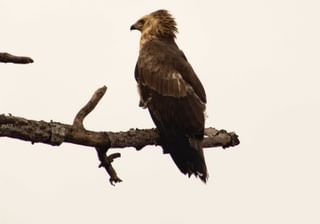
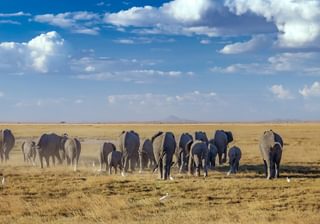
Lake Nakuru
A hugely rewarding safari destination for both birding and game viewing with the lake attracting millions of pink flamingos who come to feed on the algae – a marvellous sight for anyone to behold. For those wanting to tick off bird species, Lake Nakuru and the surrounding savannah grasslands and impressive fever tree forests are home to over 400 – have your binoculars at the ready and search for Eastern imperial eagles, white-fronted bee-eaters, Bateleurs, brimstone canaries, long-tailed widowbirds, African fish eagles, goliath herons and many more.
Where to stay: Loldia House
One of Kenya's oldest colonial homesteads, situated on a private farm on the shores of Lake Naivasha. With just nine bedrooms and tea served daily on the terrace, there is a cosy family feel with guests getting a chance to get to know each other amongst relaxed surroundings.
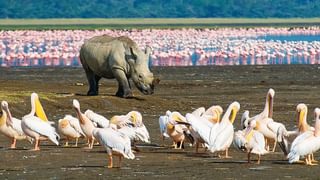
Masai Mara
One of the most famous wildlife reserves in the world, which jointly hosts the Great Migration with the Serengeti in Tanzania. Predator populations are high in the Mara and so is bird diversity which can be found in the vast open and rolling grassland savannahs and river systems. The mighty ostrich can be found here along with secretary birds, giant kingfishers, the striking Hildebrandt’s starling, southern ground hornbills and resplendent crowned cranes.
Planning a visit? Take a look at our when to go to the Masai Mara article.
Where to stay: Governors Camp
One of Kenya's oldest and still most popular safari camps provides a traditional safari experience. Set on the banks of the Mara River tucked amongst the forest, this wonderful tented camp offers fantastic opportunities to spot birds, as well as a larger game.
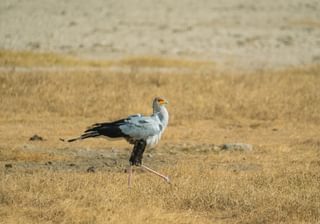
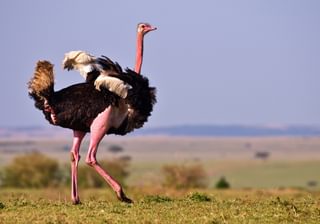
Mount Kenya
Mount Kenya provides opportunities to witness birdlife rarely seen anywhere else in the country, and birders love keeping their eyes peeled for the Tacazze Sunbird and Jackson’s francolin. The lower foothills of Mount Kenya provide forested hideaways for elusive species like the Scaly Francolin and Mountain Wagtail.
Where to stay: Elsa's Kopje
Set up on the hillside, above where George Adamson famously raised and released orphan lions (Born Free is a must read), Elsa's Kopje has long been regarded as one of the finest camps in Kenya, offering guests a luxurious and stylish game viewing experience. Set in Meru which is home to over 400 species of bird, as well as black and white rhino, you will not be disappointed.
Samburu and Buffalo Springs
One of the top-ranked birding hotspots in Kenya with such diversity you won’t know which direction to point your binoculars. The contrasting riverine forest and dry acacia habitats littered with termite mounds make for spectacular scenery in which to go hunting for the rare Abyssinian ground hornbill, large Somali ostrich, Egyptian and palm nut vultures, a plethora of brightly coloured sunbirds and bee-eaters, starlings and the unique vulturine guineafowl.
Where to stay: Saruni Samburu
Perched on a rock, with spectacular panoramic views over the unspoilt wilderness teeming with wildlife. Saruni remains one of our most popular safari lodges. An eco-chic lodge offering guests traditional safaris as well as walking safaris with brightly dressed Samburu warriors leading the way.
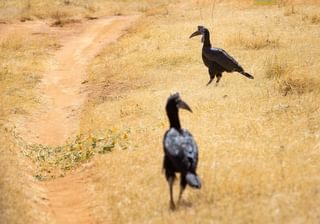
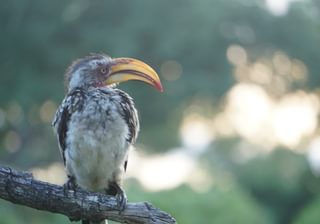
Tsavo National Park – East and West
Not as famous as the Masai Mara but Tsavo makes up 40% of Kenya’s protected land and dubbed by many as the ‘Theatre of the Wild’ – it’s, without doubt, a key birding destinations in Kenya hosting over 500 bird species.
The sheer magnitude of Tsavo means that there is a huge variety of habitats to explore, looking for the enormous variety of birds of prey including the diminutive African pygmy falcon and Bateleur. The park's location near the coast also means that it is often a breeding ground for birds that live around the shores of the coast.
Tsavo is in a prominent position on many birds’ migratory routes so most European birds that come to Africa to escape from the cold winter will break there at the park and spend time here. Some of the migratory birds include Collared Sand Martin, Barn Swallows, European Bee-eater, Common Swift, White Stork, Common Cuckoo, and Egyptian Vulture among others.
Where to stay: Finch Hattons
If you are looking for a luxury safari but with rustic charms, Finch Hattons will not disappoint. Opulent tented suites allow you to experience 5-star luxury whilst ensuring you still feel immersed in the wild and can drift of to sleep to the sounds of the bush.
Watamu
The Malindi-Watamu area is a vitally important stretch of coastline for bird conservation efforts. With significant numbers of globally threatened species found here, five designated Important Bird Areas have been created as a result. The golden sandy beaches of Watamu are feeding areas for greater and lesser Sandplovers, curlew sandpiper and crab-plovers, populations of which are internationally significant.
Where to stay: Hemingways Watamu
An iconic tropical paradise where every room has a sea view and located in a UNESCO Biosphere reserve. Step straight out onto the sandy beaches, feel the waves ripple over your toes and start to scan the beach and horizon for birds.
Top Five Kenyan Birds
We’ve come up with our favourite top five birds that we feel are synonymous with Kenya – if you spot these you’ve seen some of the country’s most famous flighted inhabitants.
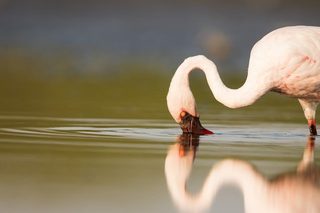
Lesser Flamingo (Phoeniconaias minor)
Standing just 3 feet tall, this is the smallest of the flamingo species, with females being significantly shorter than males. You can identify a lesser flamingo by their distinctive black-tipped bill, which allows them to feed by water filtration whilst tilting their heads backwards.
Fact: They spend approximately 20% of their day feeding on crustaceans and algae.
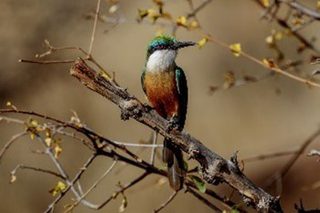
Somali Bee Eater (Merops revilii)
Nesting in small colonies called ‘clans’, Somali Bee Eaters usually dig holes in cliff sides or banks of earth to raise their young. Feeding on bees and other small insects they catch in flight, these small birds are greenish-blue in colour, with brown chest plumage and a black bar extending across their eyes.
Fact: Non-breeding adult birds participate in raising the young of other members – referred to as co-operative breeding.

Lilac Breasted Roller (Coracias caudatus)
A common bird in the Masai Mara, the best time to spot them is at dawn or dusk. The name comes from their impressive courtship flight, involving fast, shallow dives from considerable heights with a rocking/rolling motion. You can easily identify this bird from its distinctive pastel plumage, striking field marks and long tail streamers.
Fact: Lilac Breasted Rollers are the national birds of Kenya.
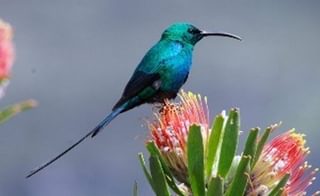
Scarlet Tufted Sunbird (Nectarinia johnstoni)
Keep your eyes peeled for this elusive endemic bird, it’s usually seen in heath, on forest edges and in high altitude areas. Scarlet Tufted Sunbirds seasonally descend to lower altitude areas in Kenya where lobelias plants are common. You can identify these birds by their iridescent dark green plume, scarlet pectoral tufts and long tail feathers.
Fact: Normally found in montane forest and moorlands between 3000-4000m in altitude.
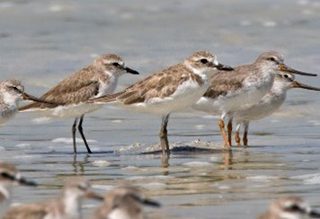
Lesser Sand Plover (Charadrius mongolus)
This small wader bird is often seen residing in small creeks and along the coastline of Kenya. Often confused with the Greater Sand Plover, it can be distinguished by its smaller size and thinner bill, although difficult to judge unless both species are present.
Fact: Little is known about the Lesser Sand Plover. Scientists are currently still researching their origins and migration routes.
Wondering when you visit Kenya? Take a look at our guide on the best time to visit Kenya.
As well as many fantastic birds, Kenya is home to the Big Five - take a look at our top 5 places to see the Big Five in Kenya.
Looking for some more inspiration? Take a look at our best safari holidays ideas, our favourite family safaris, our big five safari guide or our top African safari honeymoon suggestions.
If you are looking for a safari which includes bird watching within it, give our friendly team of experts a call on 01768 603 715 and they'd be happy to help.

